The top fittings, filters, methods and other accessories for turning your vacuum into a sawdust collection tool in your workshop.
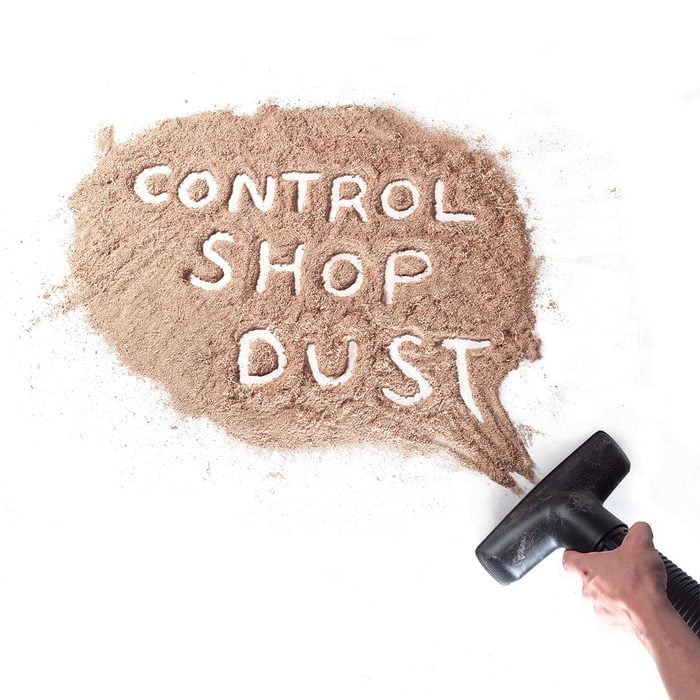
Getting Rid of Sawdust
You don’t have to put up with that irritating layer of sawdust that seems to settle throughout the shop, garage or basement every time you cut and sand a few lengths of trim. Nor do you have to shell out the big bucks for a central sawdust collection system.
You can capture most nuisance dust with a standard shop vacuum and a few accessories. We’ll show you how to assemble simple, inexpensive dust collectors that’ll suck up most of that sawdust before it gets all over everything.
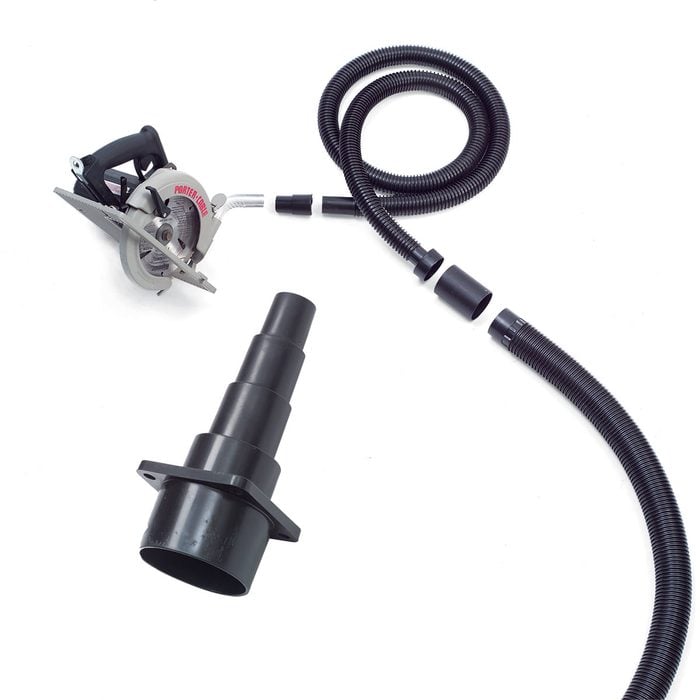
Get Universal Adapters for Transitions
If you’re lucky, you can plug the vacuum hose directly into the dust port of your tool. But that won’t happen often, because the size of dust ports on power hand tools varies.
The best strategy for putting together a dust collector system is to buy a universal adapter. You simply cut the soft rubber with a utility knife so that it fits the dust port on the tool and the vacuum hose for a woodworking dust collection system. (We recommend 1-1/4 inch hose for most hand power tools.) However, keep duct tape handy for completely sealing odd-size dust ports.

A Smaller 1-1/4 Inch Hose Is Great for Flexibility
Buy a 6-foot (or longer) length of 1-1/4 inch hose to connect directly to hand power tools. Then connect the 1-1/4 inch hose to the standard 2-1/2 inch vacuum hose with a plastic friction fit coupling. The smaller hose is light and flexible compared with the larger hose. No drag, no kinks. You’ll barely notice the 1-1/4 inch hose as you move the saw, sander or other tool across the work piece. Most sanders have dust ports, but relatively few circular saws and routers have sawdust collection systems.
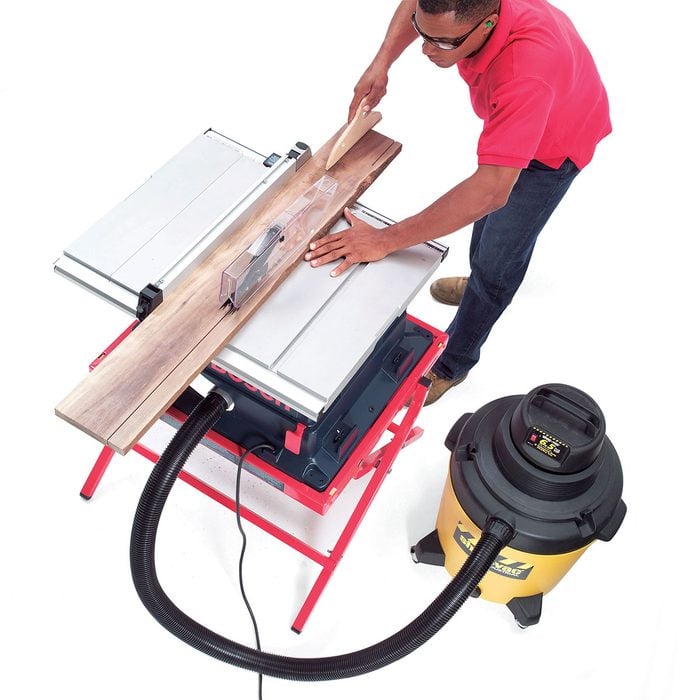
Buy Bench-Top Tools With Sawdust Collection Ports Whenever Possible
These days, most bench-top saws and planers have dust ports, and they make a huge difference in controlling dust, even with a shop vacuum. You won’t get it all, but even an 80 percent reduction will help a lot.
The connections are usually easy. In most cases, the ports are a standard 2-1/2 inch, so you can simply push the 2-1/2 inch vacuum hose right into the port as we show here. This works best with larger capacity vacuums, because the sawdust and chips from a table saw or planer build up fast!
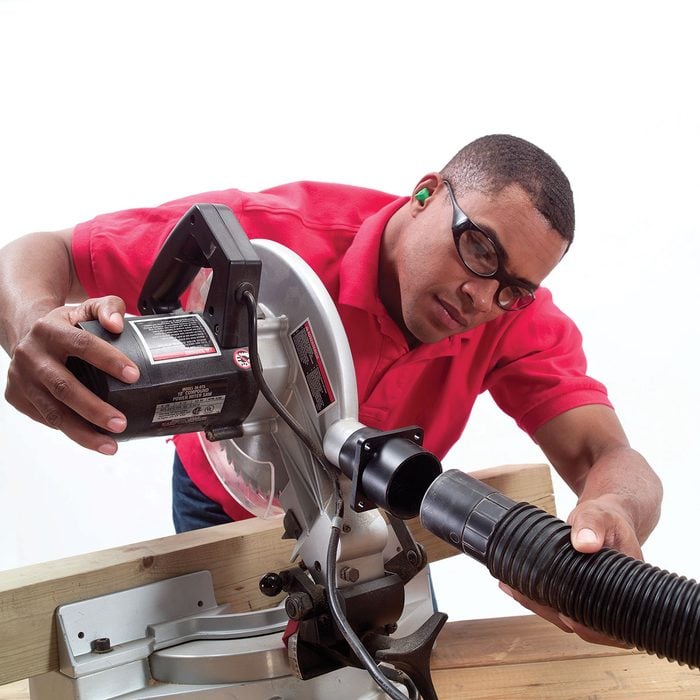
Attach a Permanent Fitting for Sawdust Collection
Ideally, tool manufacturers would standardize dust ports so you could swiftly move your hose from one tool to another. But that’s not yet the case. In the meantime, save time and frustration by installing an adapter permanently on heavily used tools, such as miter saws. Then you can simply plug in the hose.
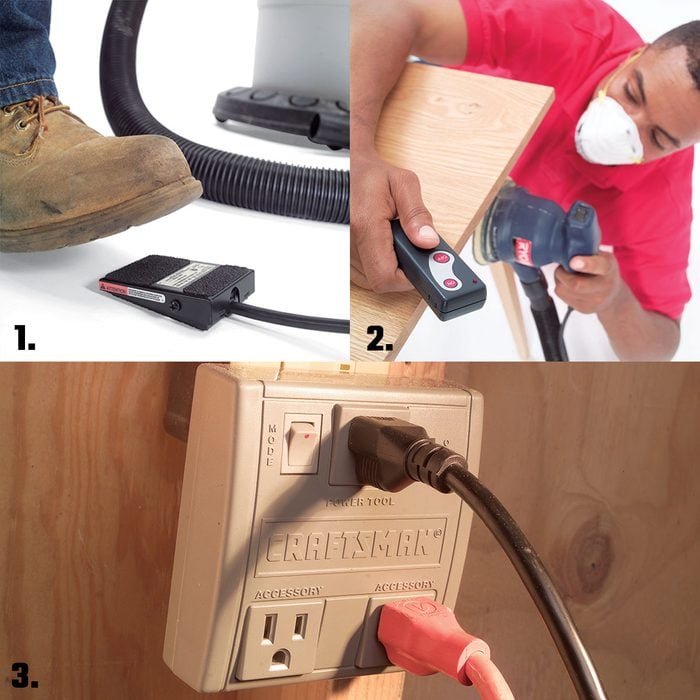
Use Remote Controls
Higher-priced shop vacuums often come with a special switch that turns on the vacuum automatically when the tool starts up. (Fein is one brand.) This is a great feature, because you don’t have to walk over to the shop vacuum to turn it on every time you want to make a cut.
However, you can also solve this problem in three other ways:
- Use a pedal switch to turn on your vacuum.
- Buy a remote switch and turn the vacuum on from anywhere in the room
- Plug your tool and vacuum into a special power box that activates the vacuum when the tool is turned on.
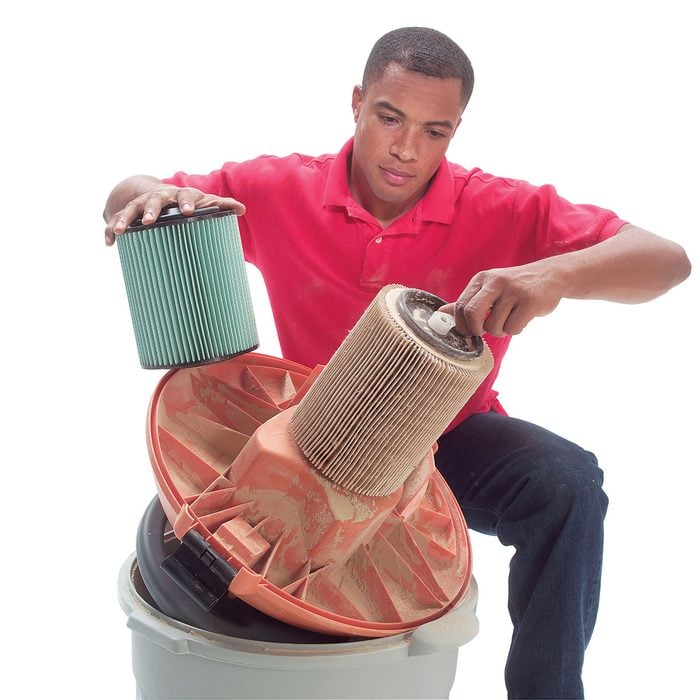
Upgrade to a Better Filter
You may have noticed the cloud of fine dust that blows out the exhaust when you turn on most shop vacuums. Small dust particles flow right through standard shop vacuum dust filters. To stop this fine dust, buy a high-quality HEPA filter from any store that sells your vacuum brand. They are well worth the price because they last a long time and can be rinsed clean.
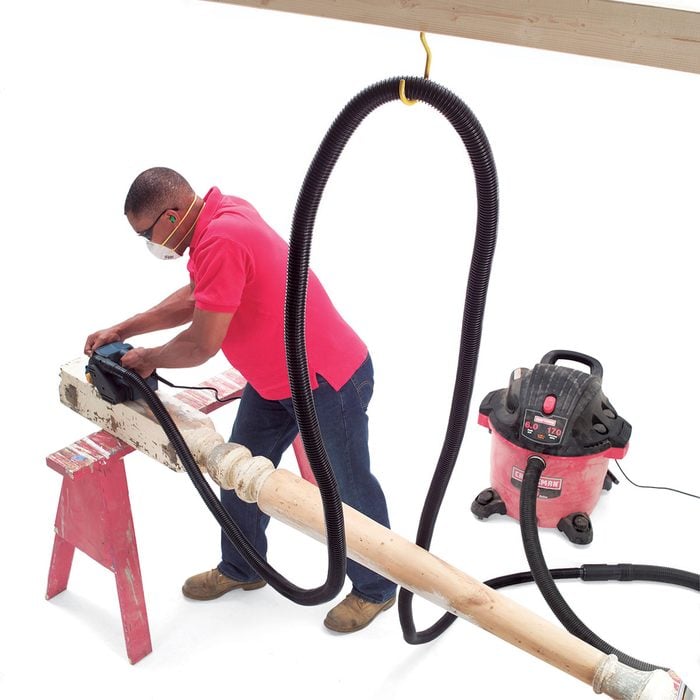
Reduce Hose Clutter
Sawdust collection hoses add to the clutter in a small shop. But if you tend to work in one area, you can eliminate some of the tangle and keep the tool from getting hung up by loosely hanging the vacuum hose from an overhead hook. If you want to go all out, add several in the areas you work in most often.
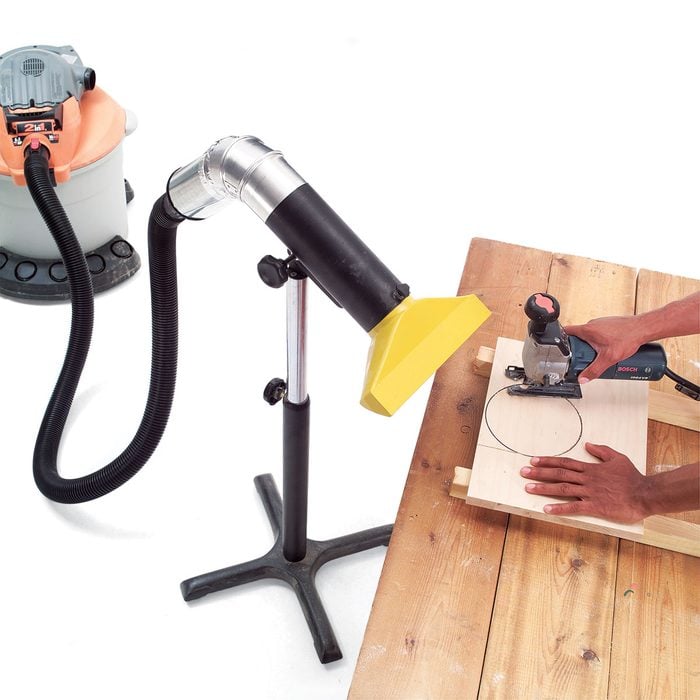
Use a Portable Sawdust Collection Hood
Many power tools don’t have dust ports. But if you’re doing a lot of cutting and drilling, you can easily position a portable dust collector nearby. Depending on the system, you may have to fiddle with adapters and metal duct (from home centers) to make the transition to the vacuum hose. You can also rummage through the HVAC aisle at your local home center and put together a less expensive system with stock parts and duct tape.

